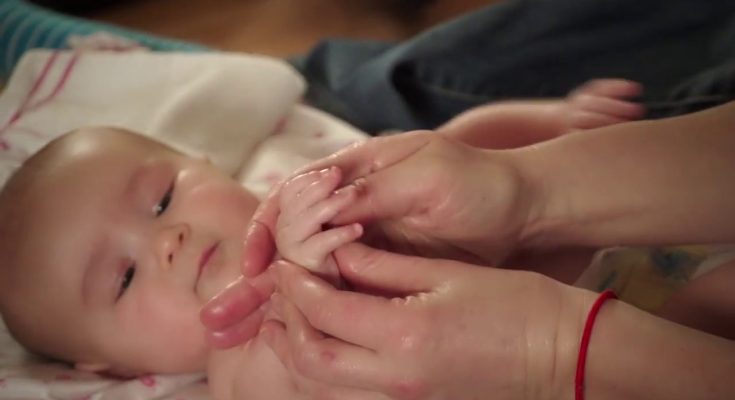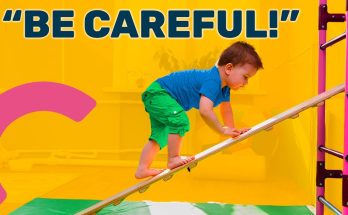Baby massage is an ancient practice that has been used across cultures to promote bonding, relaxation, and overall well-being for infants. The simple act of gently massaging a baby not only soothes them but also has numerous physical and emotional benefits. In this article, we will explore a practical approach to baby massage, including its benefits, techniques, safety considerations, and tips for making the experience enjoyable for both the baby and the caregiver.
Benefits of Baby Massage
Baby massage has been widely recognized for its various benefits, including:
- Enhanced Bonding – Touch is one of the earliest senses that develop in infants. Through massage, parents and caregivers can strengthen their emotional connection with the baby, fostering trust and security.
- Improved Sleep Patterns – Massage can help babies relax and establish better sleep patterns by reducing stress hormones and promoting the release of melatonin, a hormone associated with sleep.
- Aids Digestion and Relieves Colic – Gentle strokes on the baby’s tummy can aid digestion, reduce bloating, and help ease colic or gas discomfort.
- Boosts Circulation and Muscle Development – Regular massage promotes better blood flow, improves flexibility, and supports overall muscle development.
- Strengthens the Immune System – Massage has been shown to enhance the immune system by stimulating the lymphatic system, which helps the body fight off infections.
- Reduces Stress and Anxiety – The act of massaging a baby can lower levels of cortisol (stress hormone) in both the baby and the caregiver, leading to a calmer and happier environment.
When and Where to Massage Your Baby
For a successful massage session, timing and environment play a crucial role. Consider the following guidelines:
- Pick the Right Time – The best time for a massage is when the baby is calm but alert, such as after a bath or before bedtime. Avoid massaging right after feeding or when the baby is overly tired or fussy.
- Create a Comfortable Environment – Choose a warm, quiet space with soft lighting to create a soothing atmosphere. Use a soft blanket or a firm but comfortable surface to lay the baby down.
- Use the Right Oil – Opt for natural, unscented baby oils or edible oils like coconut or almond oil, as babies may put their hands in their mouths.
- Make Eye Contact and Communicate – Talk to your baby in a gentle voice and make eye contact to reassure them throughout the massage.
Practical Baby Massage Techniques
Here are some effective techniques to follow while massaging different parts of your baby’s body:
- Legs and Feet
- Start with gentle strokes from the thigh down to the feet.
- Massage the soles of the feet using circular motions with your thumb.
- Gently flex and extend the baby’s legs to promote movement.
- Arms and Hands
- Stroke from the shoulders down to the hands using gentle but firm motions.
- Massage the baby’s palms in a circular motion and lightly stretch each finger.
- Tummy
- Use clockwise circular strokes to aid digestion and relieve gas.
- The “I Love You” stroke: Trace the letters “I,” “L,” and “U” on the baby’s tummy to help with colic relief.
- Chest
- Place your hands flat on the baby’s chest and stroke outward toward the shoulders.
- This technique helps with relaxation and breathing.
- Back
- Lay the baby on their tummy and gently stroke from the neck down to the lower back.
- Use circular motions on the shoulders and avoid pressing on the spine.
- Face and Head
- Lightly massage the forehead, eyebrows, and cheeks using gentle circular motions.
- Use light strokes along the sides of the face to help with sinus relief.
Safety Considerations
While baby massage is generally safe, there are some important precautions to keep in mind:
- Always be gentle and attentive to your baby’s cues. If they seem uncomfortable or start crying, stop the massage.
- Avoid massaging areas with rashes, cuts, or irritation.
- Be cautious around the soft spots (fontanelles) on the baby’s head.
- Use natural oils and avoid anything with strong fragrances or synthetic ingredients.
- If your baby has a medical condition, consult a pediatrician before starting massage therapy.
Tips for a Successful Baby Massage Session
- Make it a Routine – Incorporating massage into your baby’s daily routine can help reinforce relaxation and bonding.
- Sing or Talk to Your Baby – Soft singing or talking during massage enhances comfort and engagement.
- Be Patient and Responsive – Some babies may take time to get used to massage, so go at their pace.
- Include Gentle Movements – Incorporating mild stretches and movements can help with motor skill development.
- Watch for Cues – If your baby is smiling, cooing, or visibly enjoying the massage, continue. If they turn away or seem distressed, stop and try again later.
Conclusion
Baby massage is a wonderful way to nurture your baby’s physical and emotional well-being. With a practical approach and gentle techniques, it can become a cherished routine that promotes relaxation, bonding, and health benefits. By creating a soothing environment, following safe massage techniques, and paying attention to your baby’s cues, you can make baby massage a rewarding experience for both you and your little one. Whether used for relaxation, colic relief, or improved sleep, baby massage is a simple yet powerful practice that enhances the early bonding experience and supports healthy development.



